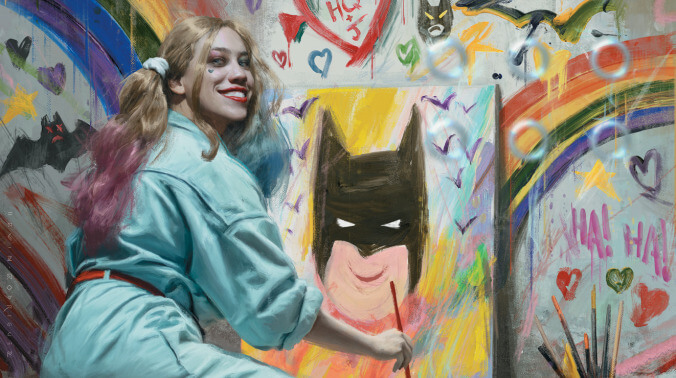The Batman has the box office, but a new Detective Comics whodunit might be more compelling
“Shadows Of The Bat” grows something exciting from familiar roots, as a doomed con job elevates the arc above expectations


Gotham City really needs to find a new namesake for its mental health facilities. Whether it’s a creepy asylum on the outskirts of the city or a gleaming downtown skyscraper, if it has the Arkham name attached, it’s going to become the site of something horrific. The new Arkham Tower lasts a full 24 days before it ends up in flames, and writer Mariko Tamaki wastes no time getting to the burning in “Shadows Of The Bat” (DC Comics), the 12-part weekly story unfolding in Detective Comics. Skepticism is understandable, given that it feels like there are already a thousand Batman comics coming out every month, but Tamaki and her artistic collaborators tell their story with a breakneck pace that makes you want the next chapter as quickly as possible.
Tamaki’s run on Detective Comics started by narrowing its focus on Bruce Wayne, newly acclimating to life as a single bachelor in a Gotham City brownstone, surrounded by wealthy neighbors. It had a heavy horror influence in villain Dr. Hue Vile and the neon-green parasite inside his body, but the main art team of artist Dan Mora and colorist Jordie Bellaire handled the genre-mashing with flair, delivering spectacle and suspense in equal measure. And now, following the conclusion of the “Fear State” story, Bruce Wayne has departed Gotham altogether, and left Detective Comics with an expanded cast, which includes most of the Bat-family and Dr. Chase Meridian, who originally debuted in 1995’s Batman Forever.
The plot of “Shadows Of The Bat” retreads a lot of material we’ve seen fairly recently: the latest Arkham building descending into chaos, Psycho Pirate taking control of a large group of people, even the Scarecrow showing up to exact revenge only a few months after he was brought down for his latest citywide scheme. And yet, the story captivates because it has some key twists, specifically around its main antagonist: Tobias Wear, a con man who sees the opportunity to make major money by exploiting Gotham’s need for mental health treatment. The detective aspect of the series comes via members of the Bat-family going undercover in Arkham Tower, and Tamaki finds time to give everyone their own spotlight while emphasizing how engaging these characters are when they operate as a finely tuned crime-fighting machine.
This weekly story features a different art team for each four-issue act: Ivan Reis, inker Danny Miki, and colorist Brad Anderson set the stage with sharply detailed linework and blockbuster action staging. The second act artwork from Max Raynor and colorist Luis Guerrero is very crisp, but remains a little too polished as the story shifts into the messiness of Dr. Wear’s doomed con job and the realization that he’s in way over his head. The third act brings a renewed sense of mayhem as Bellaire and Amancay Nahuelpan take over art, presenting the rapid collapse of Arkham Tower with visuals pumped full of adrenaline.
Nahuelpan previously worked with Tamaki on the wildly entertaining Crush & Lobo miniseries, a wacky sci-fi comedy that saw Nahuelpan push his design and action skills as he took the dysfunctional father-daughter pair across the cosmos. His work here is in a completely different genre space, but still has the same kinetic energy and attention to environmental detail, which are enriched by Bellaire’s bold colors. Irvin Rodriguez’s painted covers are the one consistent visual element across all chapters, and they do phenomenal work depicting characters with striking realism while still channeling very specific feelings, whether it’s Harley Quinn’s playfulness or Huntress’ severity.
The back-up story, “House of Gotham,” takes readers on a journey through Gotham City history as it delves into the past of Nero XIX, one of the patients at Arkham Tower. Writer Matthew Rosenberg, artist Fernando Blanco, and colorist Bellaire put their own spin on distinct Batman eras by presenting them from a tortured young boy’s perspective. When they veer too far from the tone and subject matter of the main story, back-ups can feel extraneous, which goes directly against their purpose as a value add for the book’s $4.99 price tag. The back-ups in Detective Comics, however, consistently inform the main story while bringing stylistic variety to the book, which is exactly what these back-ups should do. It’s an ideal example of how to use these back-ups: exploring the psychological horror of “Shadows Of The Bat”—already a story well worth your time—through a very different lens.